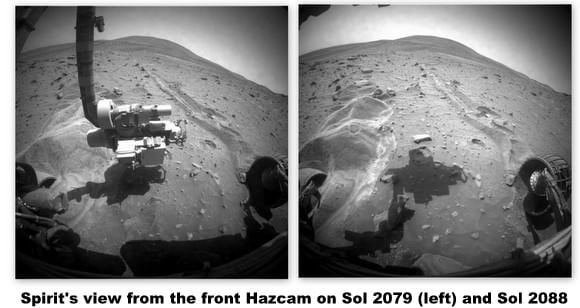Mission managers sent the drive commands to the Spirit rover at 4 a.m. EST (0900 GMT) today, -- Nov. 17, 2009 and Sol 2088 for the rover -- but the data back from the rover indicates the rover stopped less than one second after it began moving its wheels when the rover automatically sensed more lateral tilt than permitted. A tight limit on vehicle roll and pitch of less than 1 degree change was set for this first drive, and as the rover began its first move, it sensed that its roll was outside the allowed limit and safely stopped the drive. Those driving the rover say they are starting cautiously, setting initial parameters with very tight limits with the knowledge that these hair triggers may stop the rover frequently. As the project gains confidence with extrication, these limits may be relaxed. From this limited drive the team now has a more accurate measurement of vehicle roll and pitch that will be used for subsequent drive planning. Analysis is continuing. The team hopes to completion their planning of the next drive on Wednesday, Nov. 18, with possible wheel movement again on the 19th (Sol 2090)
At last week's press conference about the attempt to extricate Spirit from the Martian sand trap, the rover team stressed this procedure could take weeks or months, with the likelihood of not being successful.
Learn more about the process in this video footage of the rover testing and planning teams.
Source:
Free Spirit
 Universe Today
Universe Today
